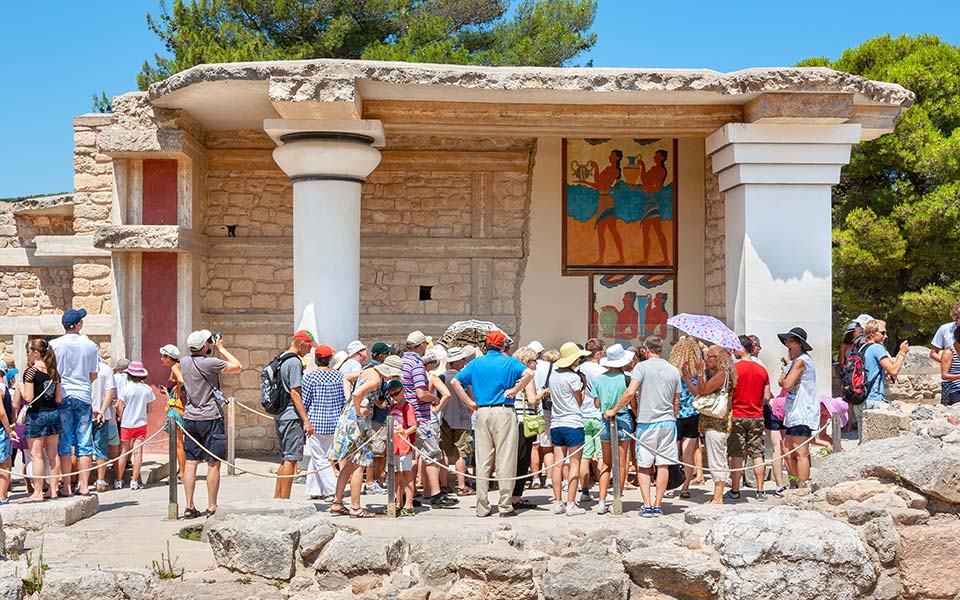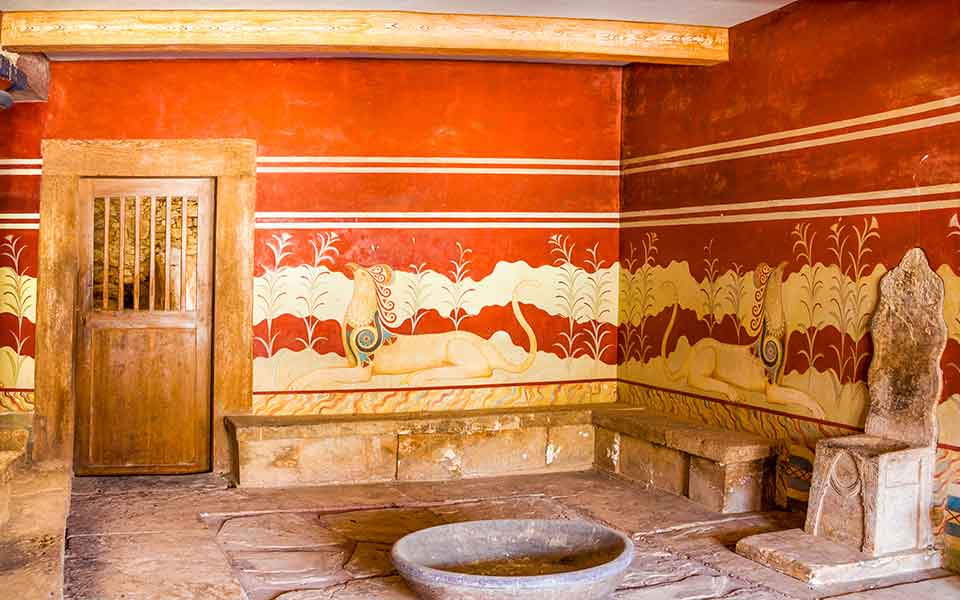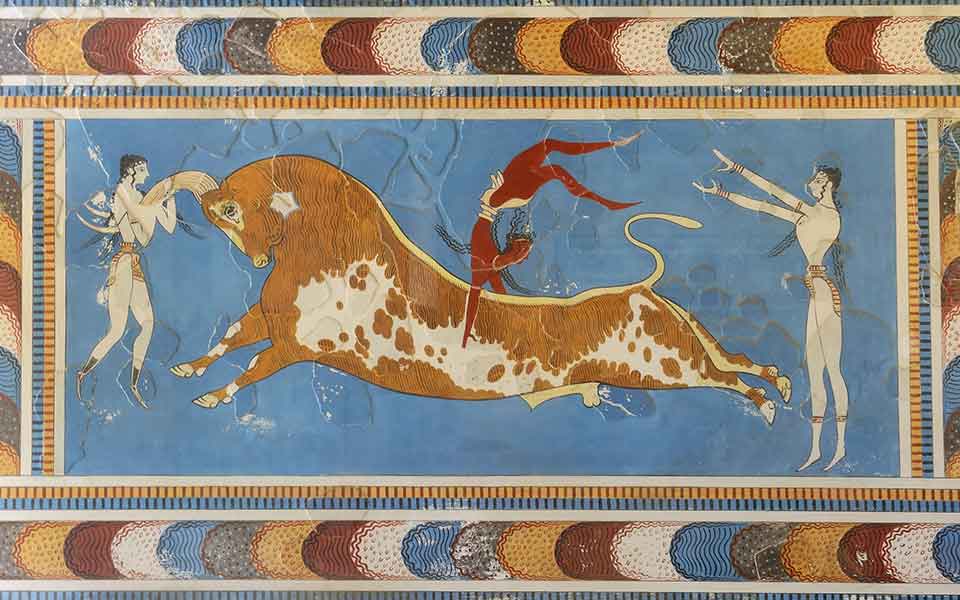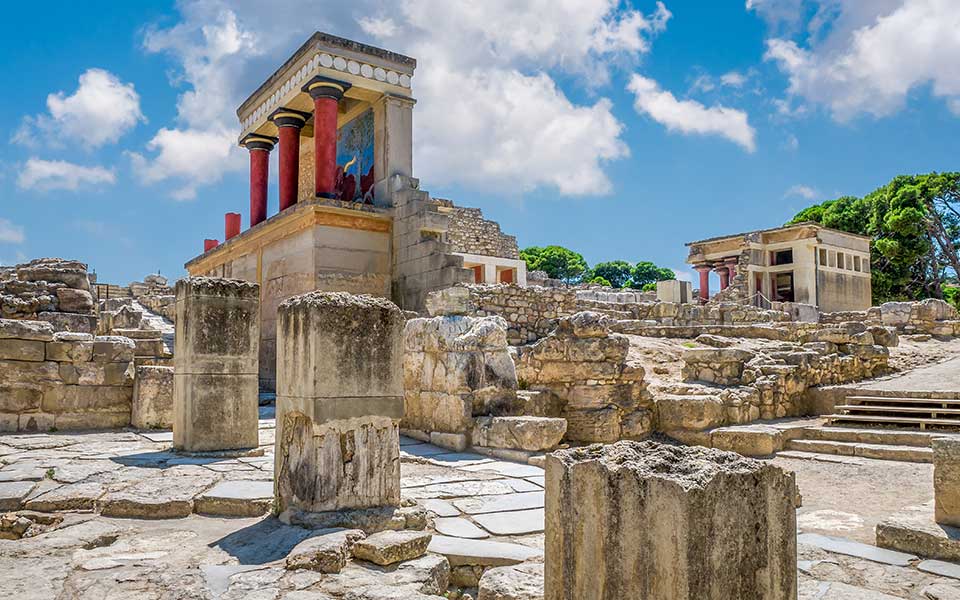The Palace of Knossos, located just outside Heraklion on Crete, stands as one of Greece’s most important archaeological sites. Celebrated for its ties to the Bronze Age Minoans and the legendary king Minos, Knossos has captivated visitors for generations, offering a glimpse into a complex society that thrived more than 3,000 years ago. With its intricate architecture and vibrant frescoes, the site is a window into the lives of one of Europe’s earliest advanced civilizations. Today, Knossos ranks as Greece’s second most visited archaeological site, drawing hundreds of thousands of tourists annually.
Amid its historical grandeur, the Hellenic Ministry of Culture has undertaken an ambitious restoration and modernization initiative aimed at enhancing the visitor experience while safeguarding the site’s archaeological integrity. This project underscores Greece’s dedication to maintaining Knossos as a world-class cultural destination and positioning it as a candidate for UNESCO World Heritage status by 2025.

© Hellenic Ministry of Culture
Restoration and Modernization
The latest phase of restoration at Knossos centers on upgrading the entrance and improving its integration with Heraklion’s urban landscape. Speaking on the project, Minister of Culture Lina Mendoni emphasized its importance:
“Knossos is Greece’s second most visited archaeological site, after the Acropolis. Promoting the Minoan Palace and five other palace complexes from the same era is a priority for the Ministry of Culture. The Minoan Palaces are Greece’s 2025 candidate for the UNESCO World Heritage List.”
This comprehensive plan, supported by extensive architectural, static, electromechanical, and geotechnical studies, seeks to enhance both the functionality and aesthetics of the site. A budget of around 3.5 million euros has been allocated to the project, which will unfold in two phases. The first phase focuses on improving structural elements and optimizing visitor flow, while the second, due for completion by 2030, will address infrastructure, including new public service buildings and expanded parking facilities.

© Hellenic Ministry of Culture
Central to the project is a redesigned entrance area featuring a larger, more accessible square to better manage the heavy foot traffic. Three single-story service buildings will provide modern amenities, blending convenience with Knossos’ historical ambiance. Additionally, pedestrian paths will be widened, creating a smoother transition from the parking areas to the palace entrance. This careful integration of modern infrastructure ensures that Knossos can accommodate its growing number of visitors while maintaining its authenticity as a site of profound historical significance.
In collaboration with local authorities, the Ministry of Culture aims to transform Knossos into a destination that not only offers rich historical insights but also modern, sustainable infrastructure to meet the demands of contemporary tourism. As Mendoni highlights:
“The Regional Governor of Crete, Stavros Arnautakis, and regional departments worked closely with us. I want to thank them for their partnership in shaping the Integrated Spatial Investment of the Minoan Palaces.”
These developments mark a pivotal moment in the evolution of Knossos, ensuring that it remains both a cultural landmark and a modern tourist destination for years to come.

© Shutterstock
A Controversial Legacy
Knossos holds a unique place in the annals of archaeology, not only due to its significance as the cultural and political heart of Minoan civilization but also because of the bold, and often controversial, restoration work carried out by British archaeologist Sir Arthur Evans in the early 20th century. When Evans initiated his excavations in 1901, Knossos was little more than a collection of ruins. Yet, his vision transformed the site into a reconstructed monument of palatial grandeur.
Evans’ reconstructions covered key areas of the palace, from the famed Throne Room to the elegant Queen’s Apartments. By rebuilding sections of the complex, he allowed visitors to engage with Knossos not as a mere archaeological site, but as a place that echoed the splendor of its past. His work made the palace’s historical significance more tangible through vibrant frescoes, reconstructed columns, and restored walkways.
“If Evans hadn’t worked to preserve and restore so much of Knossos, it would have undoubtedly been largely lost,” says Dr. Senta German, associate professor of Classics and Humanities at Montclair University in the US.

© Shutterstock
Through Evans’ efforts, Knossos came to symbolize the sophistication of Minoan Crete, a culture believed to have dominated the Aegean during the Middle to Late Bronze Age, c. 2000-1450 BC. His reconstructed Throne Room, with its vivid frescoes, offers a striking glimpse into the palace’s grandeur, shaping the way visitors today imagine ancient Crete. However, this legacy is complicated.
While Evans’ work undoubtedly saved much of Knossos, his approach to restoration has sparked debate for its historical inaccuracies. His interpretations, while based on available evidence, often reflected his creative vision more than strict archaeological data. As a result, much of what visitors see today may differ from the site’s original appearance. For instance, parts of the Throne Room are now understood to belong to a later Mycenaean period, though many visitors leave with the impression that it reflects Minoan culture in its entirety.

© Shutterstock
Conservation vs. Restoration: The Dilemma
Evans’ work raises enduring questions about how best to preserve ancient sites. Should they be meticulously restored to offer an immersive experience, or left as found, with minimal intervention? This dilemma between conservation and restoration underscores the delicate balance archaeologists must maintain between historical accuracy and public engagement.
Conservationists argue that interventions should be minimal and reversible, ensuring that future discoveries or technological advances can refine current understandings. Evans’ reconstructions, while visually captivating, are largely irreversible. His bold recreations of Knossos mean that future archaeologists must work within the framework of his vision, even if more accurate reconstructions could be made based on modern evidence.
On the other hand, restoration advocates believe that carefully planned interventions can enhance the educational and experiential value of a site. Visitors to Knossos, confronted with mere ruins, may struggle to grasp the full scope of its historical significance. By reconstructing parts of the palace, Evans created a vivid and educational experience, giving modern visitors a glimpse into a past otherwise lost in fragmented ruins.
At Knossos, the tension between preserving authenticity and providing an engaging visitor experience remains central. While Evans’ work has made Knossos one of the world’s most iconic archaeological sites, it also demonstrates the complexities of restoring ancient monuments. How much should we reconstruct the past to make it accessible to the present? The answer to this question continues to evolve, as the restoration efforts at Knossos today illustrate.

© Hellenic Ministry of Culture

© Hellenic Ministry of Culture
Future Vision
The ongoing restoration of Knossos marks a new chapter in the site’s long history, as the Hellenic Ministry of Culture works to position it as a modern cultural hub while carefully preserving its ancient legacy. The current upgrades, which focus on accessibility and infrastructure, are part of a broader vision to align Knossos with UNESCO World Heritage standards by 2025.
The work being done today will shape how future generations experience Knossos, ensuring that its legacy as a center of Minoan culture remains alive. Ultimately, these efforts reflect the broader challenge of balancing preservation with modernization—a challenge that is not unique to Knossos, but one that it embodies in a deeply iconic way.
With its blend of Bronze Age ruins and early 20th-century reconstructions, Knossos continues to capture the imaginations of visitors worldwide. As Greece pushes for UNESCO recognition, the question of how best to present and preserve this ancient palace for future generations remains as relevant as ever.












